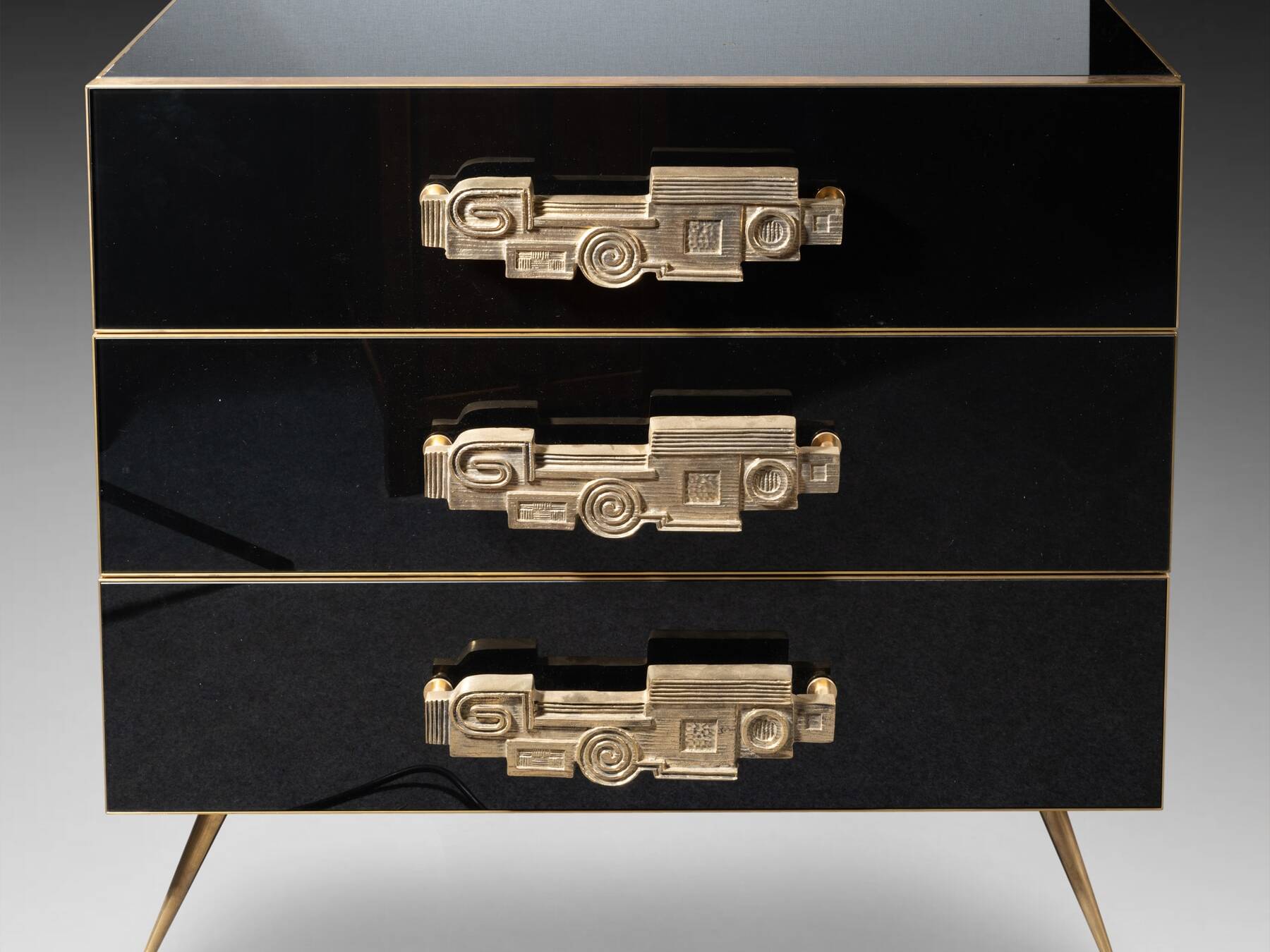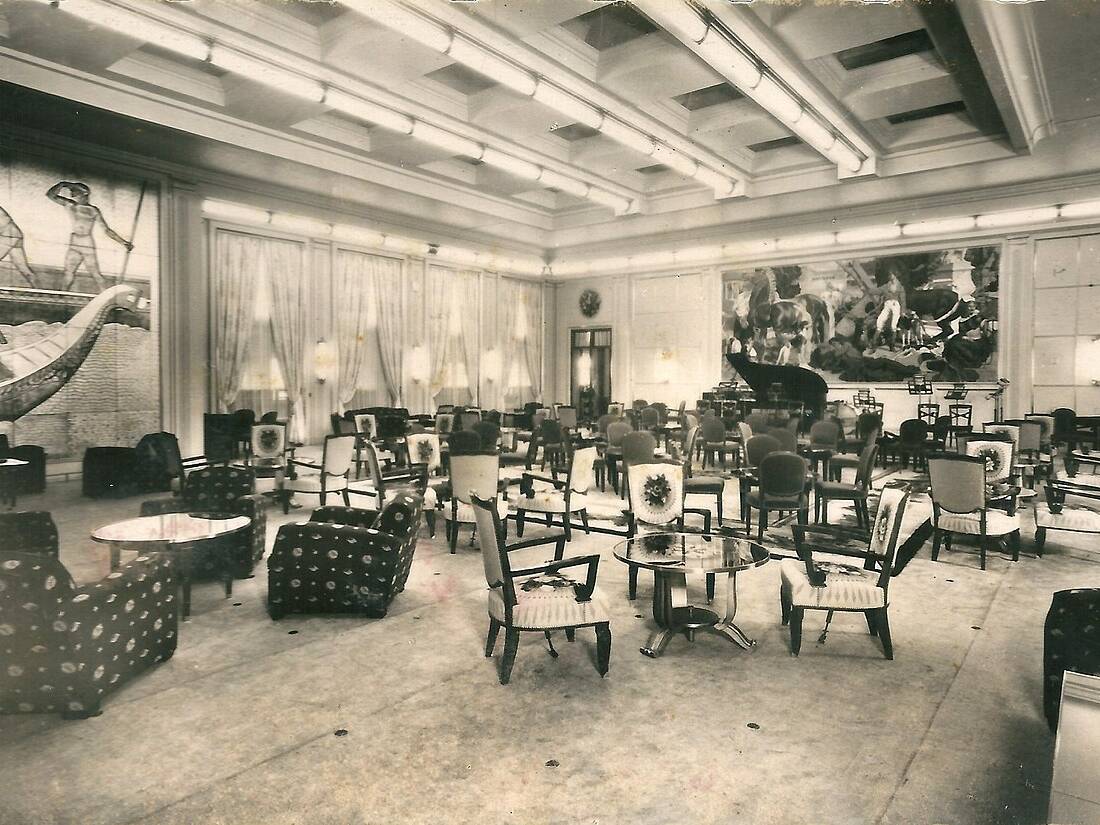Mainly made in the locksmith city of Nuremberg, privateer chests – also called Nuremberg chests or Marine chests – were produced in large numbers in the 17th century during the heyday of the privateering. The latter, well known to amateurs of piracy, was a practice of maritime warfare consisting, on the part of a belligerent, in giving to private individuals the authorization to arm merchant ships in war to run sus of one or more adversaries.
Nuremberg Chest: Privateer Safes
Inspired by the safe on land, the Nuremberg safe was used to store gold and silver coins making up the sailors’ pay, but above all to protect precious paper documents such as maritime charts, party charters (the deed proof of the conclusion of a maritime charter contract) or the bills of lading (the declaration containing a state of the goods loaded on a boat) of fire or rat damage.
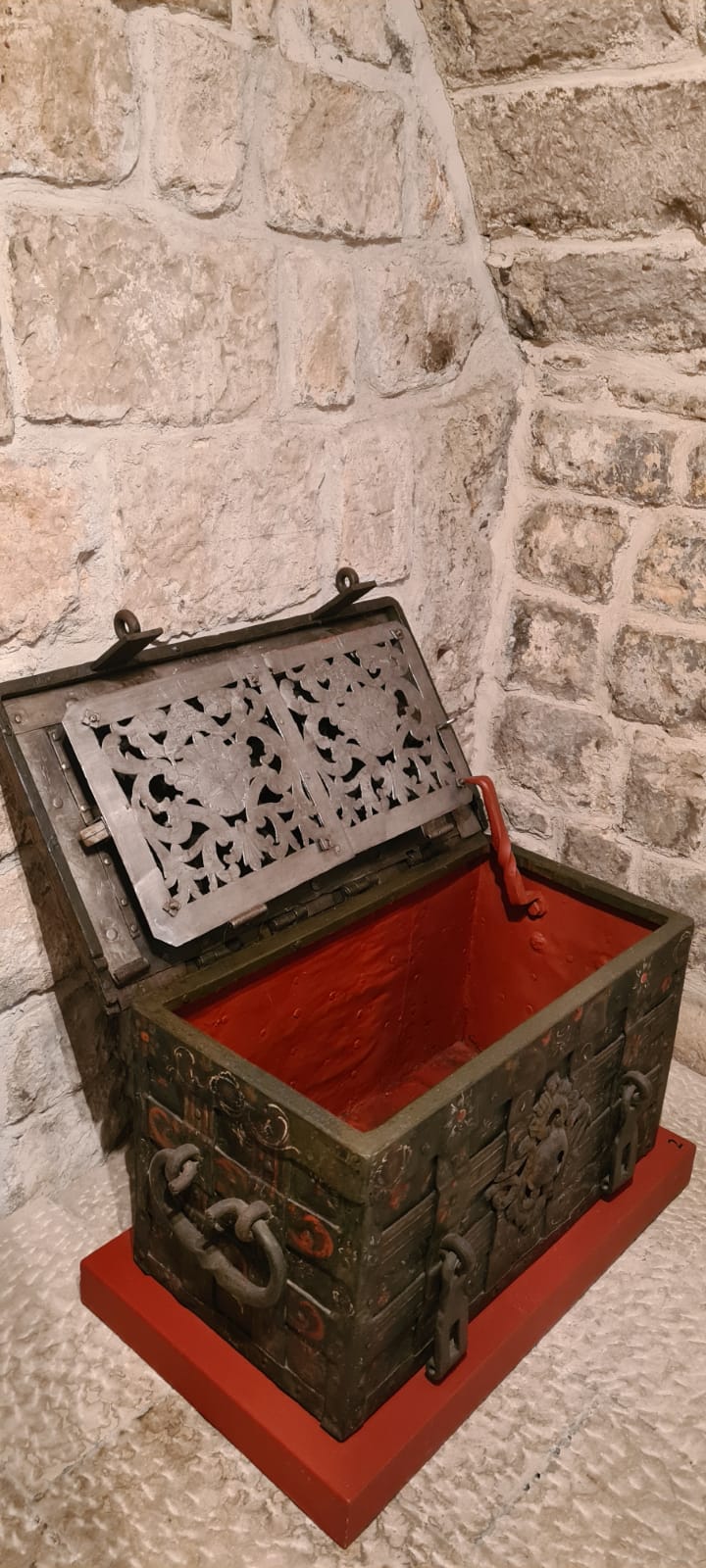
A few years ago, we presented this studded-nail iron chest-clad, painted with arabesque and flower motifs on all sides. Now on display at the Rector’s Palace in Dubrovnick, Croatia, this chest has a seven-bolt lock system. The rods of the two solid side handles have been hot-fitted and are therefore unremovable. They are twisted in the middle then folded at each end in a horizontal position.
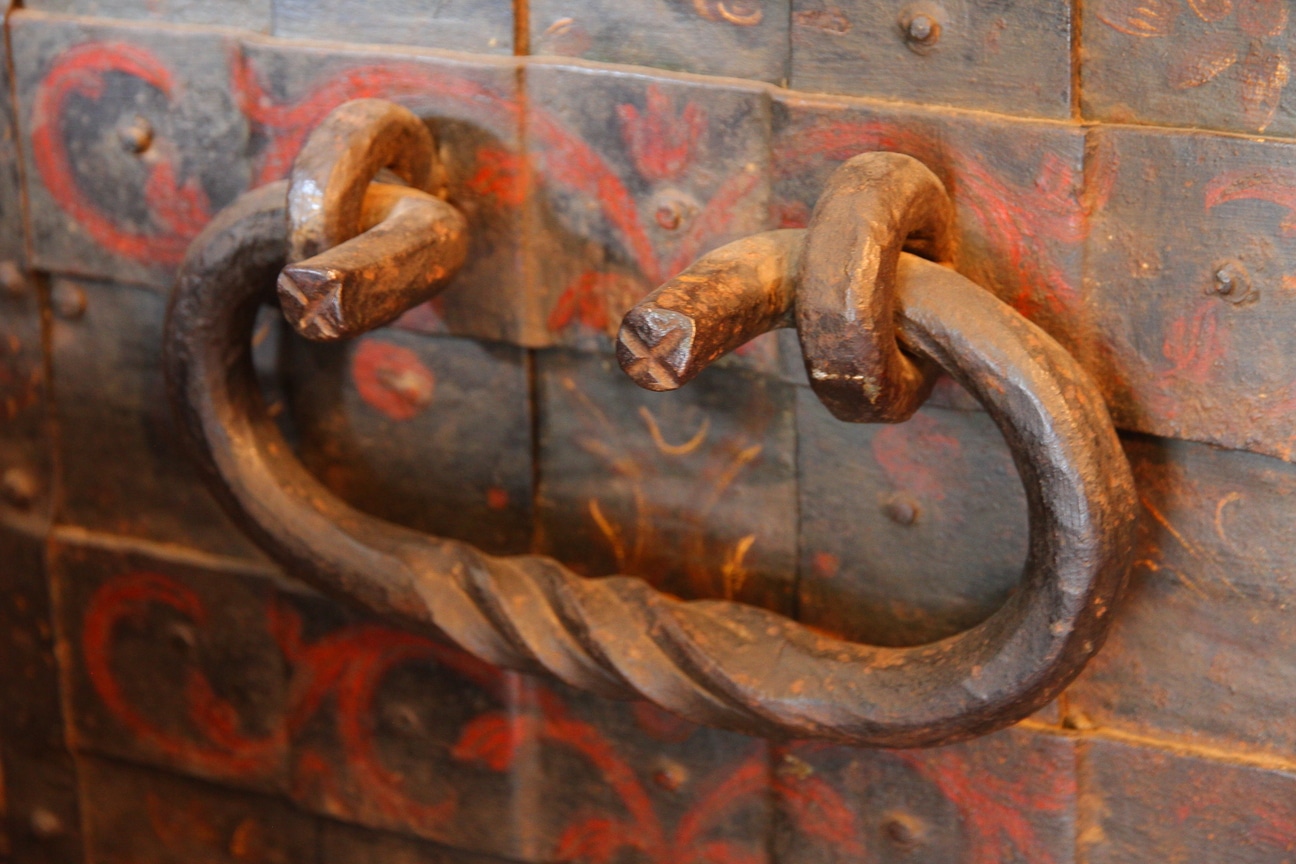
In this way, the handles, once lifted, lock onto the side walls, preventing carriers from getting their hands stuck. On the front, the mobile legs chiseled with rafters act as a mortise that engages in the rings of the lid. A rod could then be threaded through the rings and padlocked at the end. This additional precaution is explained by the capricious nature of the centrally controlled lock system which, despite regular and careful lubrication, could sometimes weaken in the face of marine corrosion. The rod provided the owner with additional protection.
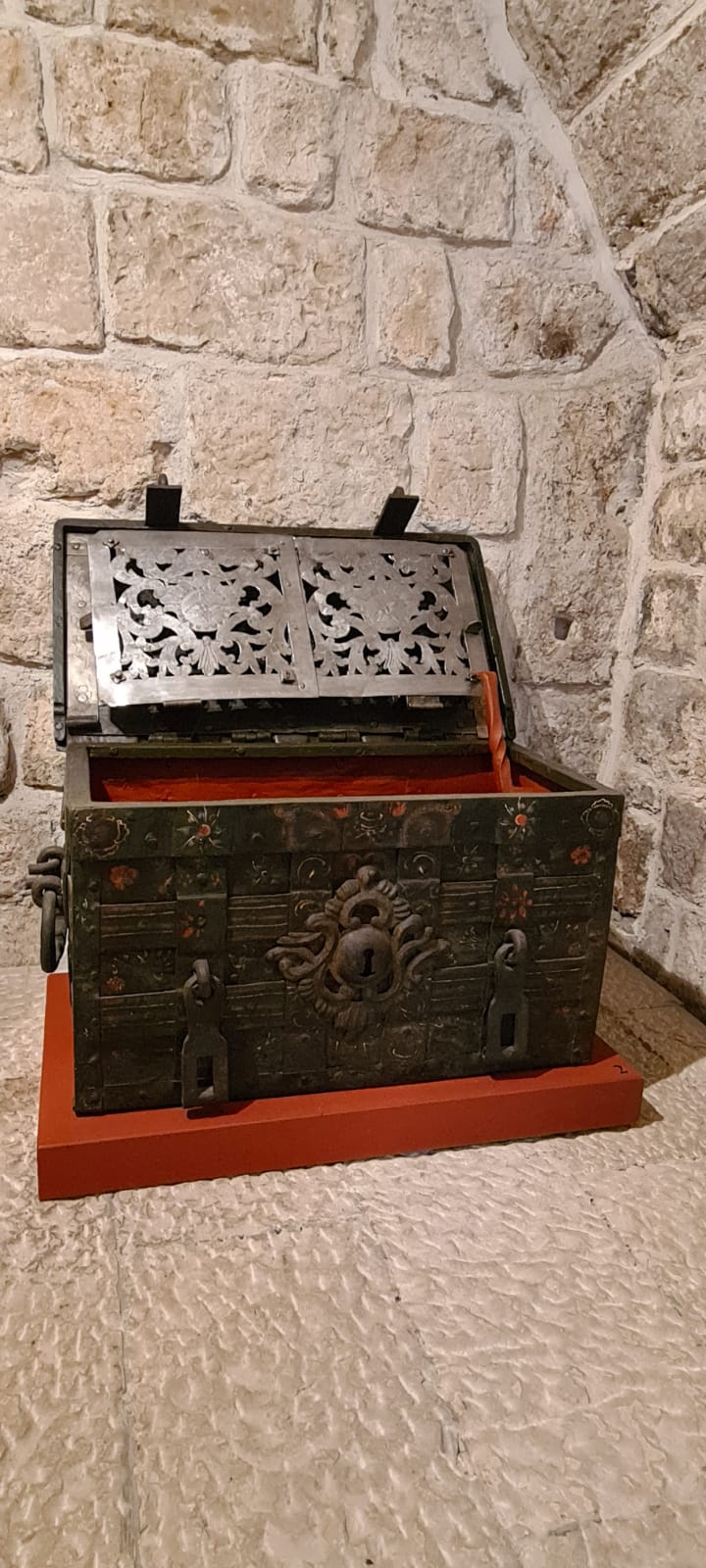
Also to guarantee its inviolability, the chest was fixed at the bottom to the floor of the captain’s cabin. However, as this type of chest was not used exclusively on ships, it could just as well be bolted to the floor beams of a castle.
Marine Safe: Clever Locks to Guarantee Security
A feigned keyhole in hammered iron in the shape of a shell, rosette or foliage was regularly applied to the front face of the chest. Its only purpose was to discourage potential thieves: trying to force such a lock proved impossible since the real opening system is located elsewhere! The real lock is accessed on the lid by means of a secret key allowing the doorway of the lock to be released, by delicately lifting a false rivet.
The lock system is always positioned on the back of the lid and over its entire surface. The seven bolts of our safe are activated with the turn of a key, which is a ring with a solid rod and a bit with two crenellated openings. The chest is then kept open with an iron bar and this system is found on all the chests of Nuremberg.
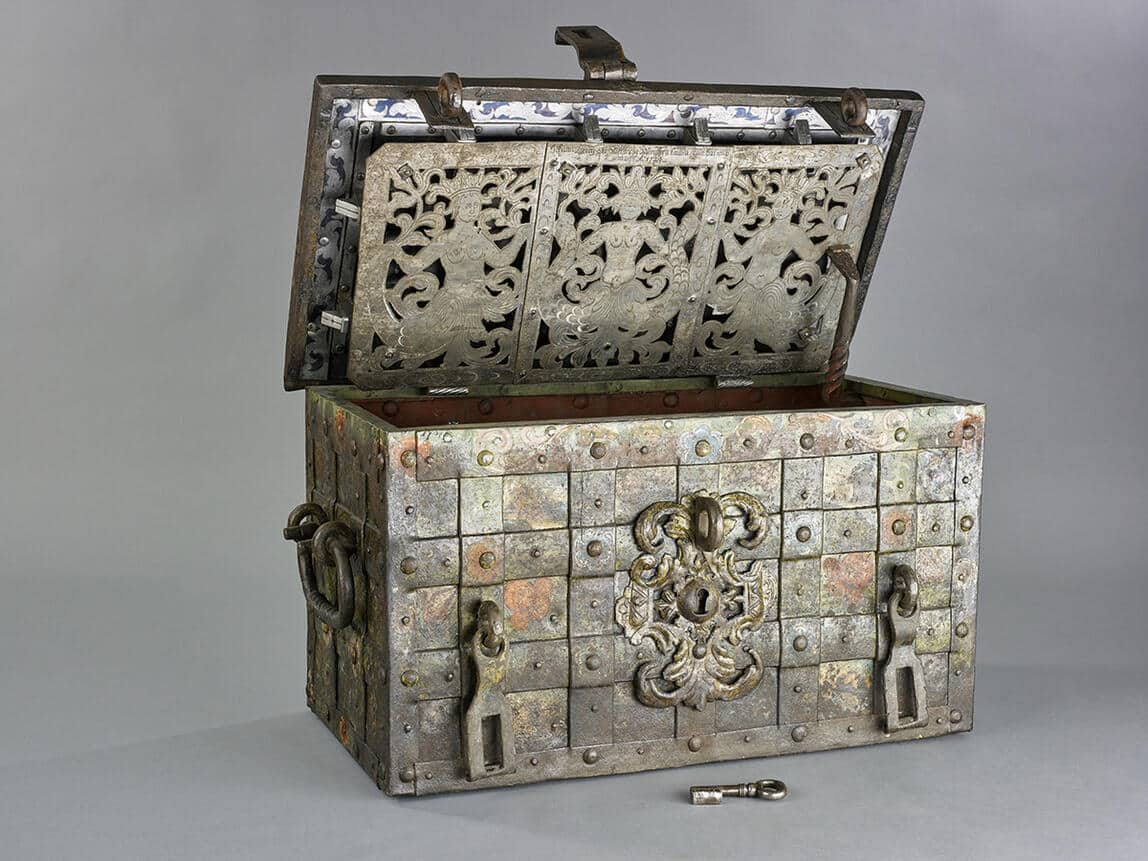
The interior was regularly equipped with a small trunk welded to the metal siding. On the back of the lid on the most ornate chests, the locking system was concealed behind an ornamental openwork screen in chiseled metal with a floral motif and often engraved with the date of manufacture of the chest. The generous decoration of these screens (probably brought back) must be related to the taste of the period which saw them born.
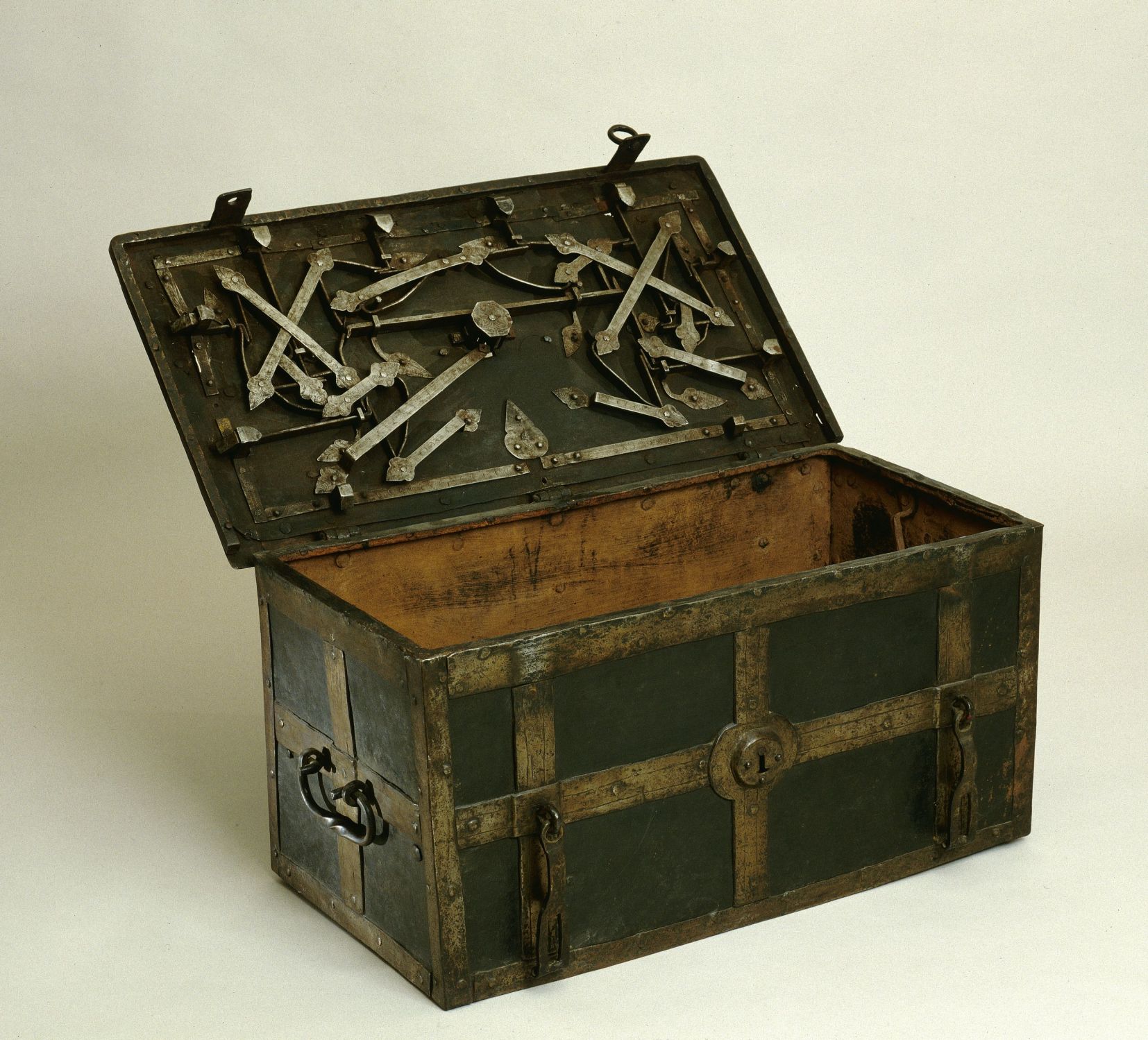
The majority of these chests were made in Germany and then decorated in Holland, but Spain (notably the locksmith city of Toledo) and France also produced them in the same style, which may explain the recurrence of floral and plant motifs on these objects.
Today, the rarity of locksmith systems in perfect working order makes these chests real objects of curiosity, which is why the one we offered was quickly acquired by the Dubrovnick museum.
Marielle Brie
Art Historian for Art Market and Cultural Media
Author of the blog Objets d’Art et d’Histoire
Autres ressources et documentations
28 June 2025
Plaster Sculptures, Plaster Casts
For a long time, plaster casts suffered from a poor reputation. Often regarded as crude replicas, and sometimes even dismissed as inexpensive imitations, they nonetheless had…
17 April 2025
The Middle-Ages Furniture
Rare and highly sought-after, Middle-Ages furniture is making a strong comeback. An overview of this market, where enlisting the guidance of a professional is strongly advisable.
18 March 2025
Murano Glass Furniture
Since the beginning of the 20th century, Murano glassmakers have been exploring new horizons. After classic lighting and decorative art, Murano glass is now used to adorn…
16 December 2024
A bronze triton after the sculptures of François Girardon (1628 – 1715) in Versailles
This fountain element is all the more admirable as it is sculpted after the masterpieces of the Pyramid Basin, on the parterre of the North Wing of the Versailles gardens.
18 November 2024
Tyco Bookcase, by Manfredo Massironi, for Nikol International
A pure creation of optical art research in the 1960s, the Tyco library shelf designed by Manfredo Massironi invites the viewer to bring the work of art to life on a daily basis.
3 August 2024
The Ocean Liner Style
In the 20th century, the immense ocean liners connecting the Old Continent and the New World were ambassadors of tastes and innovations on both sides of the Atlantic.



